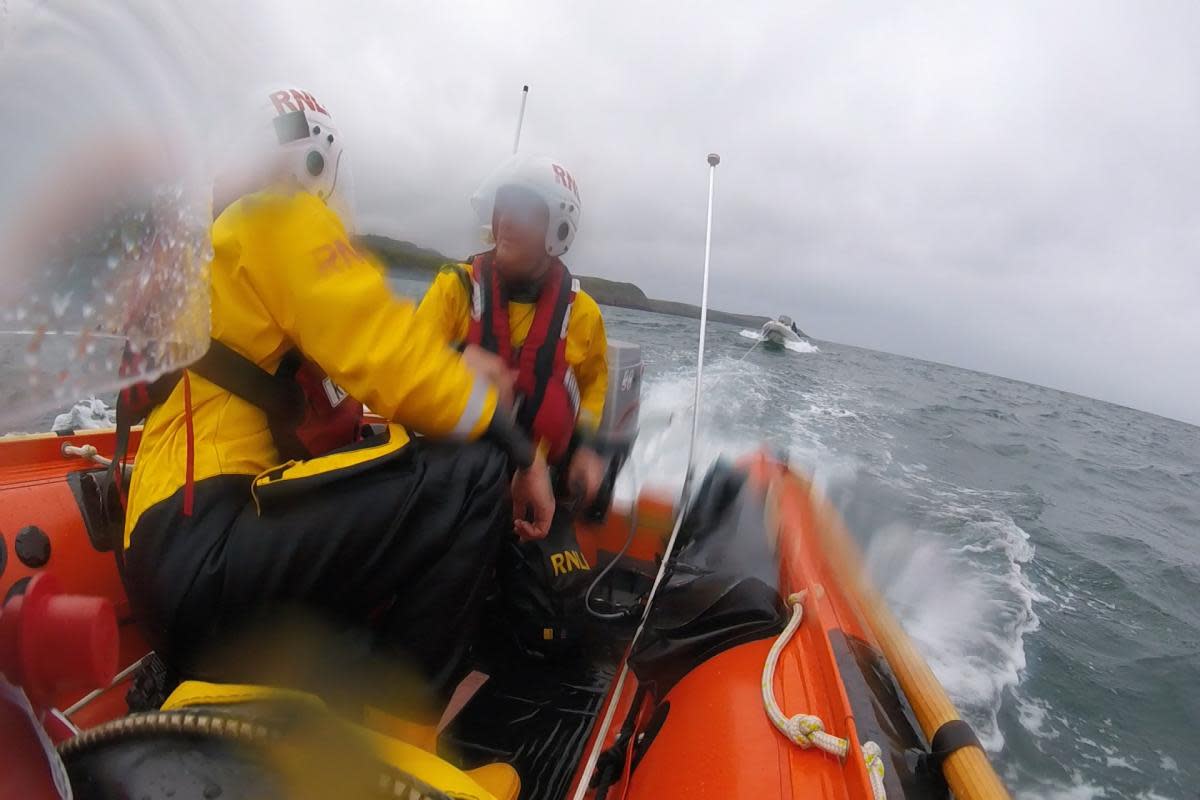Small boat without power rescued from drifting towards rocks as weather turns

A training exercise turned into a real-life rescue when a volunteer lifeboat crew was tasked to a vessel in trouble within minutes of launching.
Three volunteer crew members from Fishguard RNLI had just launched the charity’s D class inshore lifeboat Edward Arthur Richardson for a planned routine training exercise.
They were in the process of contacting HM Coastguard to inform them of this when they were tasked to the aid of a vessel that has lost all power and was in danger of drifting towards the cliffs.
The casualty vessel was a five metre rigid inflatable boat (RIB) with two people onboard. It was located around 1.5 miles east of Pen Anglas and had lost all means of propulsion.
(Image: Fishguard RNLI Lifeboat)
With rain moving into the area the two crew onboard were also exposed to the elements.
On rounding Pen Anglas the casualty vessel was spotted in the distance and the lifeboat made best speed into the conditions.
Due to the worsening weather conditions and with the boat at risk of drifting towards, it was determined the safest course of action would be to tow the vessel to the nearest safe harbour at Goodwick.
The casualty was eventually brought inside the breakwater at Goodwick where a lifeboat crew member was transferred across to assist in taking the vessel from an astern tow to an alongside tow before coming alongside the slip at Goodwick.
At the slip the RIB was made fast and her crew transferred safely ashore to recover their vessel.
Fishguard RNLI volunteer inshore lifeboat Helm, Ian Davies, said: 'We had launched to carry out routine training for crew working towards their upcoming assessments, this included setting up and establishing astern and alongside tows, when we were called upon to assist the casualty. As a result we ended up putting that training into practice to safely return the casualty vessel to shore.
'The owner did the correct thing and contacted the coastguard using their radio on channel 16 to report their situation.
“We would like to remind any water users to ensure they always carry a means of calling for help, most commonly a personal VHF radio or mobile phone kept in a waterproof pouch and should be within reach at all times.'

 Yahoo News
Yahoo News 
